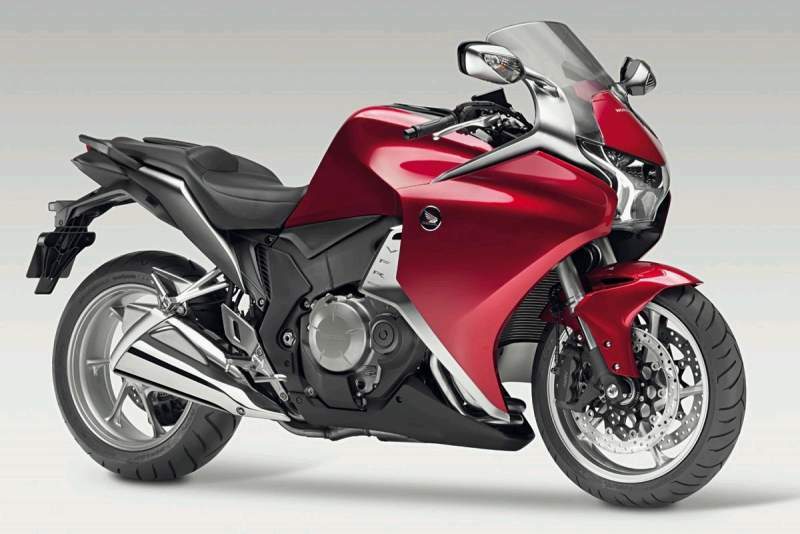ultimate motorbikes
Forum rules
The global forum rules are found here.
NOTE: posts in this section are not counted towards your total.
The global forum rules are found here.
NOTE: posts in this section are not counted towards your total.
Re: ultimate motorbikes
Man! that is a good deal WiK1d.
Those are some awesome boots!!
DS - glad you got away with just a few scratches.
Those are some awesome boots!!
DS - glad you got away with just a few scratches.
There are 10 types of people in this world.
Those who understand binary and those who do not.
Those who understand binary and those who do not.
-
WiK1d
- Registered User
- Posts: 20732
- Joined: 13 Sep 2004, 02:00
- Location: Cruising the streets of Pretoria
- Contact:
Re: ultimate motorbikes
Had another weekend at Phakisa, here is the evidence:
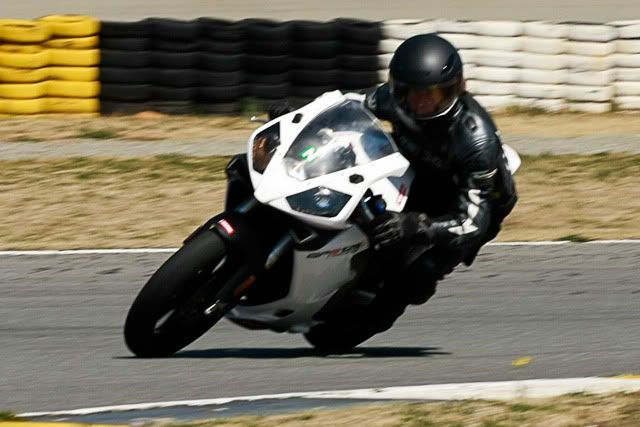
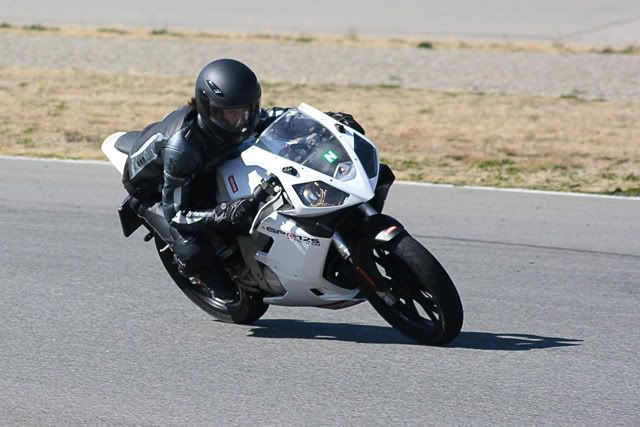
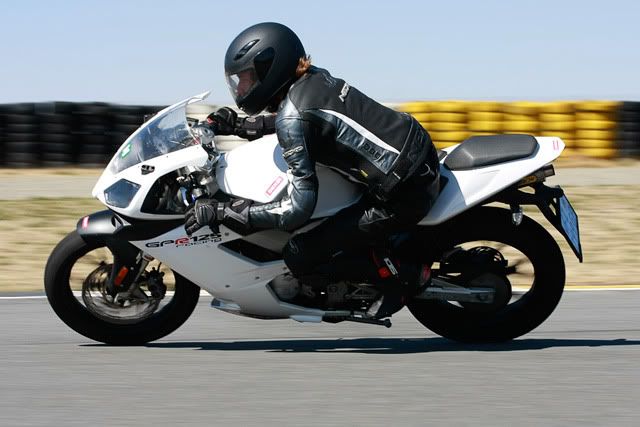



-
SykomantiS
- Registered User
- Posts: 14085
- Joined: 06 Oct 2004, 02:00
- Location: Location, Location...
- Contact:
Re: ultimate motorbikes
Sweet Wik! Seeing that I wish I was back in SA again, I really miss my bike 
And on an unrelated note: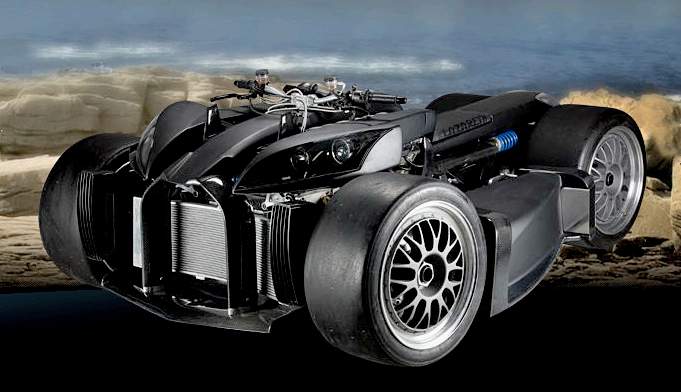
And on an unrelated note:
Motorcyclespecs wrote:Powered by a supercharged BMW V12, this Lazareth quad makes 500bhp when running on E85 (a fuel blend with 85% ethanol, 15% gasoline). Key to keeping that power from instantly killing its riders is the narrow rear track, which provides adequate straight line traction, but should keep the torque from flipping the quad on its side. The wide front track should provide plenty of lateral stability for the front end, which is good, because riders will need to countersteer aggressively to keep that rear in line under acceleration.

-
WiK1d
- Registered User
- Posts: 20732
- Joined: 13 Sep 2004, 02:00
- Location: Cruising the streets of Pretoria
- Contact:
Re: ultimate motorbikes
I read about this thing last night, it's freaking insane, and freaking awesome, at the same time!SykomantiS wrote:And on an unrelated note:[img]Lazareth%20Wazuma%20%202.jpg[/img]Motorcyclespecs wrote:Powered by a supercharged BMW V12, this Lazareth quad makes 500bhp when running on E85 (a fuel blend with 85% ethanol, 15% gasoline). Key to keeping that power from instantly killing its riders is the narrow rear track, which provides adequate straight line traction, but should keep the torque from flipping the quad on its side. The wide front track should provide plenty of lateral stability for the front end, which is good, because riders will need to countersteer aggressively to keep that rear in line under acceleration.
-
SykomantiS
- Registered User
- Posts: 14085
- Joined: 06 Oct 2004, 02:00
- Location: Location, Location...
- Contact:
Re: ultimate motorbikes
WiK1d,yeah, and then some!  You have a different linky/more info?
You have a different linky/more info?
-
WiK1d
- Registered User
- Posts: 20732
- Joined: 13 Sep 2004, 02:00
- Location: Cruising the streets of Pretoria
- Contact:
Re: ultimate motorbikes
I don't have more info, but I do have a Vid:
They're also the creators of a Supercharged Buell with single-sided everything:



They're also the creators of a Supercharged Buell with single-sided everything:



-
SykomantiS
- Registered User
- Posts: 14085
- Joined: 06 Oct 2004, 02:00
- Location: Location, Location...
- Contact:
Re: ultimate motorbikes
-
WiK1d
- Registered User
- Posts: 20732
- Joined: 13 Sep 2004, 02:00
- Location: Cruising the streets of Pretoria
- Contact:
Re: ultimate motorbikes
Wow. You should have a look at some of the other work they've done, it's insane!
http://lazareth.fr/
http://lazareth.fr/
Re: ultimate motorbikes
Hi guys, didn't want to start a fresh thread for this question.
Can anyone recommend a good place in jhb/pretoria to buy a helmet.
I know of Full Throttle in Cresta and that's about it.
Is there anywhere else I can look?
I'm actually looking for the AGV Rossi Dreamtime but I'm open to suggestions

Can anyone recommend a good place in jhb/pretoria to buy a helmet.
I know of Full Throttle in Cresta and that's about it.
Is there anywhere else I can look?
I'm actually looking for the AGV Rossi Dreamtime but I'm open to suggestions

There are 10 types of people in this world.
Those who understand binary and those who do not.
Those who understand binary and those who do not.
-
SykomantiS
- Registered User
- Posts: 14085
- Joined: 06 Oct 2004, 02:00
- Location: Location, Location...
- Contact:
Re: ultimate motorbikes
There's always CIT in Pretorius street in Hatfield. (there's also another bike shop right next to it, but I forgot the name)
Re: ultimate motorbikes
Thanks, I will go and scope them out this weekend. Do you know if they stock AGV helmets?
There are 10 types of people in this world.
Those who understand binary and those who do not.
Those who understand binary and those who do not.
-
SykomantiS
- Registered User
- Posts: 14085
- Joined: 06 Oct 2004, 02:00
- Location: Location, Location...
- Contact:
Re: ultimate motorbikes
I'm pretty sure they do, that and others like Shoei, Arai, Shark... You should be able to get most of the top brands from them. There are also a few places in Voortrekker (or Beatrix- I get confused with those two- but it's the one going away from Hatfield) but I'm unfamiliar with those shops and their stock.
-
WiK1d
- Registered User
- Posts: 20732
- Joined: 13 Sep 2004, 02:00
- Location: Cruising the streets of Pretoria
- Contact:
Re: ultimate motorbikes
CIT now only stocks Shark and Cheapies I think. I'm going past there today possibly, will have a look for you. Full Throttle is very good, but contact skinny@tankgirls.co.za for more helmet prices. She's quite active on the Think Bike forum and her prices aren't too bad.
The place next to CIT is Biking Accessories I think, and there's an Aprilia/Kawasaki shop next to that as well. What about Linex Yamaha?
The place next to CIT is Biking Accessories I think, and there's an Aprilia/Kawasaki shop next to that as well. What about Linex Yamaha?
-
SykomantiS
- Registered User
- Posts: 14085
- Joined: 06 Oct 2004, 02:00
- Location: Location, Location...
- Contact:
Re: ultimate motorbikes
Damn  scratch that then. I hate being out of touch.
scratch that then. I hate being out of touch. 
Re: ultimate motorbikes
Thanks W1K1d, let me know what you see while you're there.
Will email skinny as well to see if she can get hold of the Dreamtime.
Will email skinny as well to see if she can get hold of the Dreamtime.
There are 10 types of people in this world.
Those who understand binary and those who do not.
Those who understand binary and those who do not.
-
WiK1d
- Registered User
- Posts: 20732
- Joined: 13 Sep 2004, 02:00
- Location: Cruising the streets of Pretoria
- Contact:
Re: ultimate motorbikes
Okay, went to CIT, Biking Accessories and Aprilia/Kawasaki, nada. CIT only does Shark, HJC and Mars now. Biking Acc, didn't see any road helmets there, Apr/Kawa had a better range with Marushin/Arai/RST lids, but no AGV's.
-
SykomantiS
- Registered User
- Posts: 14085
- Joined: 06 Oct 2004, 02:00
- Location: Location, Location...
- Contact:
Re: ultimate motorbikes
Well, If I could afford it, I'd get myself an Arai. Failing that, the Shark Samurai looks positively awesome. (Sharks are also a -somewhat- 'cheapie' brand, or are they as good as the others?)
-
WiK1d
- Registered User
- Posts: 20732
- Joined: 13 Sep 2004, 02:00
- Location: Cruising the streets of Pretoria
- Contact:
Re: ultimate motorbikes
Nah Shark is pretty damn good as of late, but another VERY good helmet range (and relatively unknown) are the Marushins. I wanna get something exotic for my next lid, Airoh, Suomy, Marushin, Nolan. Need to save up first.
-
SykomantiS
- Registered User
- Posts: 14085
- Joined: 06 Oct 2004, 02:00
- Location: Location, Location...
- Contact:
Re: ultimate motorbikes
The only names I recognize there are Airoh and Nolan. (my dad had a Nolan, many many moons ago)
But how are the they, and the Airoh's? I know a couple who have the latter, but I know nothing about the brand.
But how are the they, and the Airoh's? I know a couple who have the latter, but I know nothing about the brand.
-
WiK1d
- Registered User
- Posts: 20732
- Joined: 13 Sep 2004, 02:00
- Location: Cruising the streets of Pretoria
- Contact:
Re: ultimate motorbikes
Have a look at this website. Really informative.
Re: ultimate motorbikes
I've had a range over the years.
Axo, Shark, Shoei and AVG. I have to say my current AVG helmet has been the best in terms of comfort and wind noise, but that is probably cos it is the most modern helmet I've owned.
Have heard the new Arai's are superb.
Thanks for having a look at those stores for me W1K1d.
Looks like I've got one more chance to track down an AGV Dreamtime by emailing Skinny.
Have looked on E-bay and those Dreamtime helmets are really expensive some are asking as much as 700 Euros!
some are asking as much as 700 Euros!
Only 5000 were made so I guess they've become a bit of a collectors item.
Axo, Shark, Shoei and AVG. I have to say my current AVG helmet has been the best in terms of comfort and wind noise, but that is probably cos it is the most modern helmet I've owned.
Have heard the new Arai's are superb.
Thanks for having a look at those stores for me W1K1d.
Looks like I've got one more chance to track down an AGV Dreamtime by emailing Skinny.
Have looked on E-bay and those Dreamtime helmets are really expensive
Only 5000 were made so I guess they've become a bit of a collectors item.
There are 10 types of people in this world.
Those who understand binary and those who do not.
Those who understand binary and those who do not.
-
SykomantiS
- Registered User
- Posts: 14085
- Joined: 06 Oct 2004, 02:00
- Location: Location, Location...
- Contact:
-
WiK1d
- Registered User
- Posts: 20732
- Joined: 13 Sep 2004, 02:00
- Location: Cruising the streets of Pretoria
- Contact:
Re: ultimate motorbikes
Going to be an awesome tourer, especially with "Honda VFR1200F / VFR1200F with Dual Clutch Automatic Transmission", hell yeah. But at 268kg and 278kg (Autobox) it's quite a big'un.
-
SykomantiS
- Registered User
- Posts: 14085
- Joined: 06 Oct 2004, 02:00
- Location: Location, Location...
- Contact:
Re: ultimate motorbikes
Not really, no. That's about the same weight (wet) as the outgoing 'Bird. 'cept this one will have moar power and better aerodynamics.WiK1d wrote:Going to be an awesome tourer, especially with "Honda VFR1200F / VFR1200F with Dual Clutch Automatic Transmission", hell yeah. But at 268kg and 278kg (Autobox) it's quite a big'un.
-
SykomantiS
- Registered User
- Posts: 14085
- Joined: 06 Oct 2004, 02:00
- Location: Location, Location...
- Contact:
Re: ultimate motorbikes
Push left, go left; Push right, go Right
So, not wanting to start a new thread, but still wanting to discuss it, I'll post the counter steering stuff here. (If anyone disagrees, or wants a new thread, let me know and I'll move it)
Originally from http://www.visordown.com/ ; after reading several articles and searches, I found the (what would be to me) original post thad explained counter steering way back when I got my first bike and started asking questions. (It's amazing how many of my friends, bikers included still call BS on this...)
I'm not really into discussing the physics behind it, as some claim gyroscopic effect, while other claim camber thrust and other stuff.
Anyways;
Hands up everyone who wants to attend California Superbike School? *Raises hand*
*Raises hand*
So, not wanting to start a new thread, but still wanting to discuss it, I'll post the counter steering stuff here. (If anyone disagrees, or wants a new thread, let me know and I'll move it)
Originally from http://www.visordown.com/ ; after reading several articles and searches, I found the (what would be to me) original post thad explained counter steering way back when I got my first bike and started asking questions. (It's amazing how many of my friends, bikers included still call BS on this...)
I'm not really into discussing the physics behind it, as some claim gyroscopic effect, while other claim camber thrust and other stuff.
Anyways;
Space saver: the rest of that article can be found in the spoiler, it's interesting and explains a bit more, but it's long.Countersteering 101 wrote:Not my work, but i found it and found it quite intereseting. Hope you all do too.
I said to myself I wouldn't bother to put this tip up on the website... but it comes up over and over on Visordown.com, causes lots of argument and mis-understanding and I find myself answering the same questions over and over... so, to save time here is a Question and Answer primer on countersteering. It's a bit of a long one so if you just want to find out what countersteering is, you can stop after the first couple of questions.
Q - What is countersteering?
A - There are two parts to cornering:
1) To deflect the bike from the vertical you need to countersteer.
2) Once leant over at a constant angle at a constant speed the bike will roll around in a big circle like an ice cream cone.
A motorcycle in motion leans over in corners by balancing the tendency of machine and rider to fall over under its own weight against the centrifugal force (* see pedant alert) which tends to throw rider and machine away from the centre of the corner. To maintain the lean, the motorcycle must continue to follow a curved path by turning towards the direction it is leaning. For a fixed radius of turn, there will be only one lean angle that matches a particular speed.
* [Pedant alert - this article got quoted on Visordown and one critic had nothing to say about it except "Centrifugal force... a motorcycle would have to be pretty imaginative to balance itself against an imaginary force... people giving a "scientific" explanation of how something works would be well advised to understand the science first."
Hands up, I'm guilty of using a "populist" term for an imaginary force that people feel... does it make the "push left go left, push right go right" application that is the meat of the advice in that tip any less real?
THAT was the very point I was trying to get over by avoiding getting drawn into complex discussions about the existance or otherwise of "centrifugal" force... You DON'T need to understand the physics, just feel it... and what you feel is not the completely counterintuitive centripetal force but the force that appears to throw you out during a turn. Sometimes understanding something isn't enough. You have to understand how other people understand something too.
But, just to keep him happy, I'll quote someone else who posted on that thread: "I'm a scientist who uses a centrifuge on a daily basis. I have a very simple definition of centrifugal (sic) force. It is simply momentum (Newtonian mechanics) constrained by rotation". Thanks, Alistair.
But to reach that lean angle in the first place, if you want to lean over further or pick the bike up again, you have to make a countersteering input.
How does countersteering work? Well, contrary to popular opinion, gyroscopic forces are not the answer - they contribute (and are easy to demonstrate) but the major forces (some 30 to 40 times stronger) are inertia and camber thrust. Turning the front wheel to one side (we'll say to the right) has several effects:
* the machine will turn around the point where lines drawn through the wheel spindles of the front and rear wheels cross each other (intersect)
* the effect of trail moves the contract patch of the front tyre to one side, so that the centre of gravity of the bike is no longer directly above the line on which the bike is supported between the tyres - the bike will fall to one side
* the effect of caster steering makes the front wheel lean, so that the contact patch is no longer on the centre line of the steering, and tries to turn the tyre into the corner - this is known as camber thrust
The upshot of all this is that inertia wants the bike to carry on in a straight line but camber thrust wants the tyres to turn in a tight circle to the left (roll a loose tyre to see the sort of size of the circle. The force generated by the camber thrust is not strong enough to overcome inertia and make the bike turn in the tight circle it would like but it is sufficient to give the bike an acceleration to the left. The final "set" which the bike settles into differs from machine to machine and may or may not demand rider input and depends on steering geometry, tyres, road surface etc. etc...
That (leaving out all the maths!) is what happens in a nutshell.
So again, countersteering gets you into and out of an angle of lean, leaning the bike over makes it follow a curved path.
Q - Why is it called countersteering?
A - Because you are applying a force to the bars which turns the front wheel right to go left, and turns it left to go right! The easiest way to remember what you need to do is that you need to PUSH the side of the bars in the direction that you want to go - ie you PUSH the LEFT handlebar to go LEFT, and the RIGHT handlebar to go RIGHT. For this reason it is sometimes called "push" steering.
OK, if you want, you can stop there because that really is all you need to know! But if you want to see the sort of questions that people ask about steering, read on!
- Spoiler: (show)
Hands up everyone who wants to attend California Superbike School?

